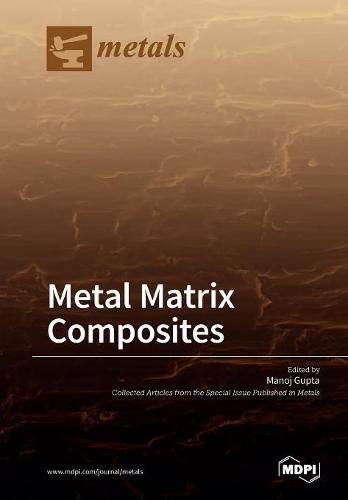Readings Newsletter
Become a Readings Member to make your shopping experience even easier.
Sign in or sign up for free!
You’re not far away from qualifying for FREE standard shipping within Australia
You’ve qualified for FREE standard shipping within Australia
The cart is loading…






This title is printed to order. This book may have been self-published. If so, we cannot guarantee the quality of the content. In the main most books will have gone through the editing process however some may not. We therefore suggest that you be aware of this before ordering this book. If in doubt check either the author or publisher’s details as we are unable to accept any returns unless they are faulty. Please contact us if you have any questions.
Metal matrix composites are a unique class of materials capable of circumventing the disadvantages of each category of materials they are composed of (polymers, metals, and ceramics). They can be designed using at least two categories of materials, harnessing their useful properties according to the designated end applications. In view of the compositional flexibility inherently associated with metal matrix composites, new materials with enhanced properties can be synthesized from practically all the metallic materials that are currently utilized in engineering and biomedical applications. This book, comprising 20 peer-reviewed papers, addresses the recent developments in the designing, processing, characterization, and potential applications of metal-based composites. The research articles cover composites based on light-weight materials (Al, Mg, and Ti) and other metal-based materials (Cu, Ag, and W), such as matrices and reinforcements from nano-length scales (such as ZnO, SiC, Y2O3, CNTs, Sm2O3, graphene oxide) to macro-length scales (such as tungsten fiber nets, saffil fibers etc.). The focus was placed almost equally on solid-state, liquid-state and two-phase synthesis techniques. Similarly, the elastic, mechanical, and thermal properties of the described composites are reported in detail. This compilation of papers will certainly be most useful for students, industrial professionals, and academics interested in learning and expanding their knowledge on metal-based composites.
$9.00 standard shipping within Australia
FREE standard shipping within Australia for orders over $100.00
Express & International shipping calculated at checkout
This title is printed to order. This book may have been self-published. If so, we cannot guarantee the quality of the content. In the main most books will have gone through the editing process however some may not. We therefore suggest that you be aware of this before ordering this book. If in doubt check either the author or publisher’s details as we are unable to accept any returns unless they are faulty. Please contact us if you have any questions.
Metal matrix composites are a unique class of materials capable of circumventing the disadvantages of each category of materials they are composed of (polymers, metals, and ceramics). They can be designed using at least two categories of materials, harnessing their useful properties according to the designated end applications. In view of the compositional flexibility inherently associated with metal matrix composites, new materials with enhanced properties can be synthesized from practically all the metallic materials that are currently utilized in engineering and biomedical applications. This book, comprising 20 peer-reviewed papers, addresses the recent developments in the designing, processing, characterization, and potential applications of metal-based composites. The research articles cover composites based on light-weight materials (Al, Mg, and Ti) and other metal-based materials (Cu, Ag, and W), such as matrices and reinforcements from nano-length scales (such as ZnO, SiC, Y2O3, CNTs, Sm2O3, graphene oxide) to macro-length scales (such as tungsten fiber nets, saffil fibers etc.). The focus was placed almost equally on solid-state, liquid-state and two-phase synthesis techniques. Similarly, the elastic, mechanical, and thermal properties of the described composites are reported in detail. This compilation of papers will certainly be most useful for students, industrial professionals, and academics interested in learning and expanding their knowledge on metal-based composites.